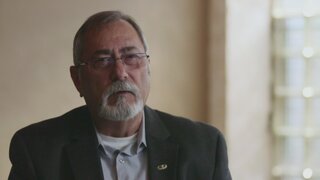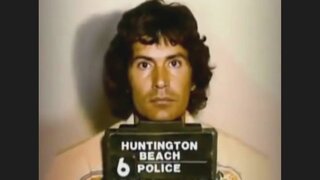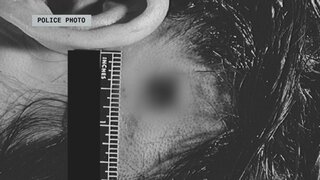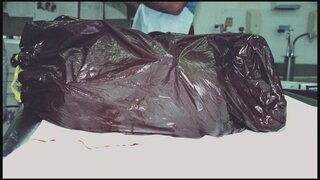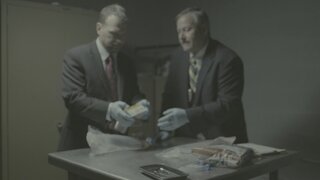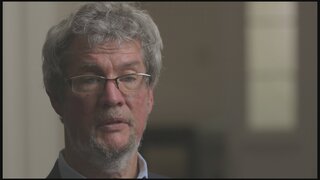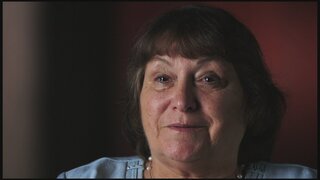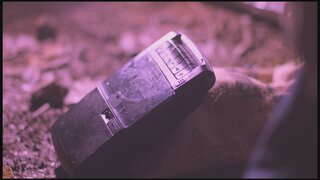The Gainesville Ripper Left Something Crucial Behind In Crime Scenes: ‘He’s A Secretor’
Danny Rolling killed five students in quick succession in August 1990 — leaving something behind at the crime scenes he so carefully posed.
Danny Rolling, popularly referred to as the Gainesville Ripper, was a career criminal who was convicted for a string of burglaries, robberies and automobile thefts mere days after he tore through the fabric of the University of Florida campus community, killing five students in bizarre and macabre ways in August of 1990.
Rolling raped, disemboweled and beheaded, but officers had a hard time catching him until something he left behind at the crime scenes — the student residences — gave him away.
“I started canvassing the neighbors in the apartment complex, talked to everyone there to see if they saw anything. We found nothing that led us to the killer,” said Captain LeGran Hewitt of the Alachua County Sheriff’s Office on “Mark of a Killer,” streaming now on Oxygen.com. “We had a killer on the loose and everything possible thing that could be looked at was looked at.”
Hewitt, who was one of the main investigators of the case, interviewed Danny Rolling at Florida State Prison in his first confessions that he was the killer, according to the Gainesville Sun. Hewitt had been assigned to take a “fresh look” at the case in January 1991, focusing on evidence found from Rolling’s campsite, including a cassette tape where Rolling, who identifies himself on audio, sang sad folk songs and talked about “bad things” he had done, reports the Orlando Sentinel.
But before the campsite was explicitly connected to the murders — it was initially tied to an armed robbery that happened during the same time period — authorities looked at the crime scenes left behind in the three student residences.
“Each one of those scenes, there was biological evidence left behind by the killer. Body fluid had been collected, where the killer had left his semen,” recalls Hewitt of the crime scenes where Rolling battered, mutilated and posed his victims who were young students in the area.
At the time of the killings, forensic technology was not as advanced as it is now. “Back then DNA was brand new and just being used. It took weeks to get a DNA profile,” said Detective Hewitt.
In weeks, anything could happen — five murders had happened over the course of mere days, and authorities wanted to close in on the murderer immediately.
There was one saving grace: his blood type.
“You can tell someone’s blood type pretty quick. Our perpetrator was a secretor,” Special Agent Don Maines of the Florida Department of Law Enforcement told “Mark of a Killer.”
A secretor is a term in forensic science for the condition where a person secretes their blood-type antigens into saliva and other bodily fluids — so even if the perpetrator’s blood wasn’t literally spilled at the crime scene, he could leave behind traces in other ways.
“Saliva, a tear drop, semen — those kind of bodily fluids, we would be able to determine what his blood type was,” explained Special Agent Maines. They determined the perpetrator’s blood type was B, which was a critical piece of information that helped eliminate prior suspects, and later, connected Rolling to the Grissom family murder.
Rolling, who was executed in 2006 at Florida State Prison after singing five religious verses by way of a final statement (LINK), killed five young people in northern Florida: Sonja Larson, 18, Christina Powell, 17, Christa Hoyt, 18, Manuel Taboada, 23, and Tracy Paules, 23.
More than 2,000 pieces of evidence from the Gainesville Ripper killings was destroyed in 2008, reported the Gainesville Sun. The decision to burn the evidence comes from a pursuit of closure, not simply routine cleaning.
A spokesperson for the Sheriff’s Office, remarking on the finality of the disposal method, said burning presented “zero opportunity for anything here to be sold on eBay.”
“Maybe it’s another chapter closed for the victims’ families… hopefully, it will give them some kind of peace,” said Hewitt to the Gainesville Sun.
Oxygen's “Mark of a Killer” delves into the psyches of serial killers with one-hour episodes focusing on their postmortem signatures. Watch the series now to find out how Danny Rolling became the Gainesville Ripper.
[Photo: Gainesville Police Department]

